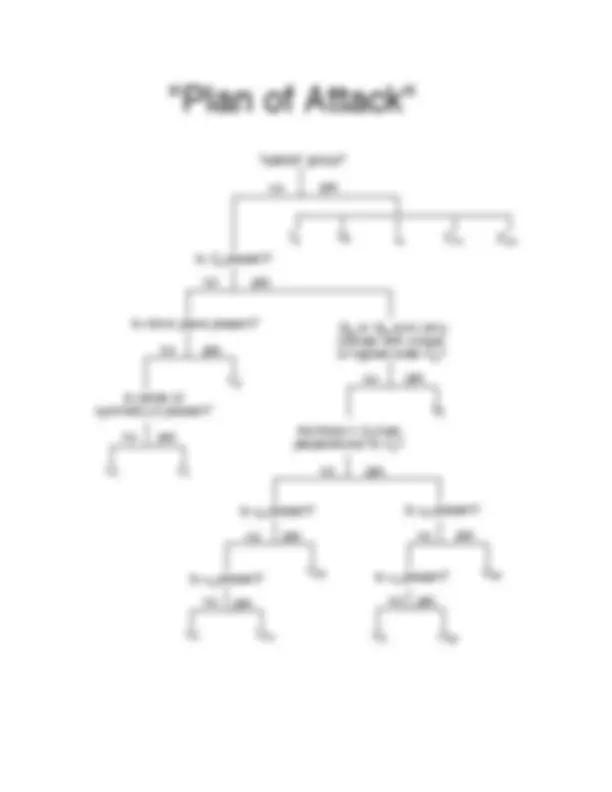



Study with the several resources on Docsity

Earn points by helping other students or get them with a premium plan


Prepare for your exams
Study with the several resources on Docsity

Earn points to download
Earn points by helping other students or get them with a premium plan
Community
Ask the community for help and clear up your study doubts
Discover the best universities in your country according to Docsity users
Free resources
Download our free guides on studying techniques, anxiety management strategies, and thesis advice from Docsity tutors
A summary of the process for determining the point group of a molecule based on its symmetry axes and planes. It covers different types of point groups, including those with and without a c2 axis perpendicular to the major axis, linear groups, and platonic solids. It also includes a 'plan of attack' for identifying special groups and the presence of various symmetry elements.
Typology: Study notes
1 / 2

This page cannot be seen from the preview
Don't miss anything!


n
(proper rotation): a rotation axis of symmetry, where n is the order of the
rotation axis or “foldedness”.
The number of degrees of the rotation is related to n by 360/ n.
The “major axis” in a molecule is the rotation axis with the highest order (highest
value of n).
Types of Point Groups:
n ,
n h
n v
-these three do not have a C
2
axis perpendicular to the major axis.
-in C
n h
, the ' h' indicates a horizontal mirror plane of symmetry present.
-in C
n v
, the ' v' indicates a vertical mirror plane of symmetry present.
-vertical mirror planes include the major axis.
-horizontal mirror planes are perpendicular to the major axis.
-if both types are present, horizontal takes precedent.
n
n h
n d
-these three do have a C
2
axis perpendicular to the major axis.
-in D
n h
, the ' h' indicates a horizontal mirror plane of symmetry present.
-in D
n d
, there are vertical mirror planes present, but no horizontal planes.
a) C
∞v
(unsymmetric) (i.e. H–Cl)
b) D
∞h
(symmetric) (i.e. O=C=O)
a) tetrahedral- T
d
(i.e. CH
b) octahedral- O
h
(i.e. SF
6
c) icosahedral- I
h
(i.e. C
60
12
12
2-
d
h
∞v
∞h
"special" group?
no
yes
Is C
n
present?
Is mirror plane present?
s
Is center of
symmetry ( i) present?
1
i
yes
yes
yes
yes
no
nh
no
no
no
Are there n C
2
axes
perpendicular to C
n
nh
Is σ
h
present? Is σ
h
present?
n
nd
yes
yes
no
no
Is σ
v
present?
no
n
nv
yes
Is σ
v
present?
yes
no
h
2 n
or S
2 n
and i only,
colinear with unique
or highest order C
n
n
yes no